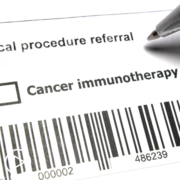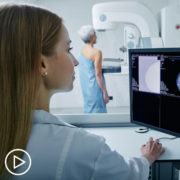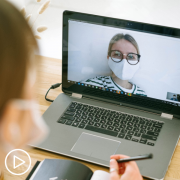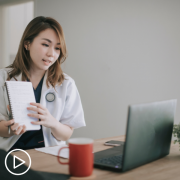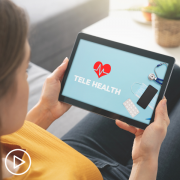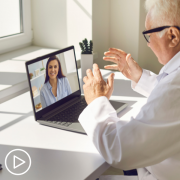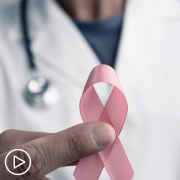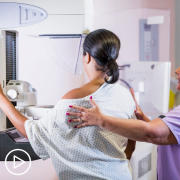Noted Racial, Ethnic, and Socioeconomic Disparities In Breast Cancer Outcomes
Noted Racial, Ethnic, and Socioeconomic Disparities In Breast Cancer Outcomes from Patient Empowerment Network on Vimeo.
What are breast cancer disparities? Expert Dr. Demetria Smith-Graziani explains notable disparities seen in breast cancer risks, treatments, and outcomes – and questions for patients to ask their doctor to help ensure their best care.
Demetria Smith-Graziani, MD, MPH is an Assistant Professor in the Department of Hematology and Medical Oncology at Emory University School of Medicine. Learn more about Dr. Smith-Graziani.
[ACT]IVATION TIP
“…have an open and honest discussion with your physicians about the, your particular breast cancer risk and about the specific treatment recommendations that you receive, why you’re receiving those recommendations, and how people who get those treatments usually do.”
Download Guide | Descargar Guía en Español
See More from [ACT]IVATED Breast Cancer
Related Resources:
|
|
|
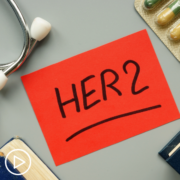
What Treatments Are Available for HER2-Positive Metastatic Breast Cancer? |
Transcript:
Lisa Hatfield:
Dr. Smith, what are the noted racial, ethnic, and socioeconomic disparities seen in breast cancer risk, treatment, and outcomes?
Dr. Demetria Smith-Graziani:
So a lot of work has been done over the years to really understand more about disparities in breast cancer. When it comes to breast cancer risk, we know that while white women are more likely in United States to be diagnosed with breast cancer, Black women are more likely to die from breast cancer. Black women also have a higher risk of triple-negative breast cancer, which is known to be a more aggressive form of breast cancer, and Black women are diagnosed on average at a younger age compared to white women.
When it comes to disparities in treatment and outcomes, we can see that a lot of what affects the type of treatment that you receive and how you end up doing after that treatment are related to not only your race or ethnicity, but also your income, your insurance status, what zip code you live in, and other social factors and structural factors in our country, it’s really important that both patients and providers are aware of the disparities and the causes, because it’s up to all of us, but especially those in the healthcare system, to think about the ways that we can address them.
So, my activation tip for patients is to be aware of the fact that these disparities exist and to have an open and honest discussion with your physicians about the, your particular breast cancer risk and about the specific treatment recommendations that you receive, why you’re receiving those recommendations, and how people who get those treatments usually do.
Share Your Feedback:
Create your own user feedback survey




